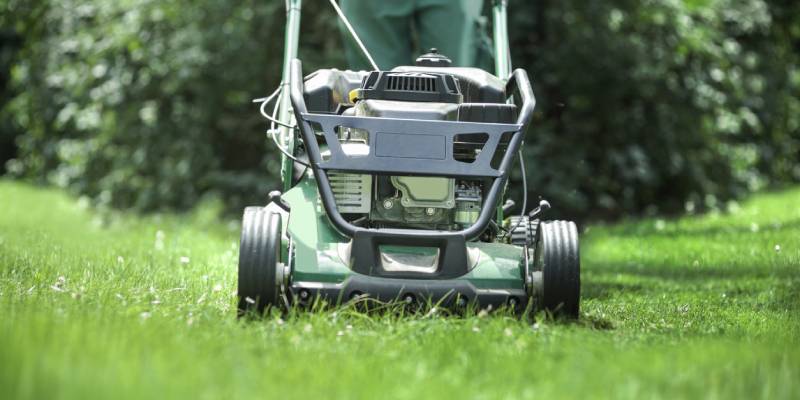
Over time, erosion around the house can slowly damage your property’s foundation as well as wreak havoc on your lawn. This is especially true for areas that see periods of heavy rainfall.
For properties with a sloping lawn or areas of loose sand and soil, controlling erosion is even more important. Embracing such projects can be intimidating for most homeowners, as many don’t know where to start. But fortunately, there are a number of solutions to help prevent erosion around the house, and some are especially effective for sloping lawns.
After assessing your property and pinpointing weaknesses where erosion can occur, you’ll better understand what types of erosion control make the most sense for your property and your budget. Here are five solutions that effectively stabilize soil and prevent erosion.
1. Planting Trees and Vegetation
Plants provide soil with natural reinforcement while helping facilitate optimal ground porosity. In other words, trees and other vegetation can help to slow down the flow of water over the soil. They do this by allowing as much water to soak in the ground before the excess can flow.
Perhaps even more important for erosion control and prevention, the roots from trees and vegetation help stabilize soil. Big tree roots as well as fibrous roots, stolons, and rhizomes from other vegetation help to hold the soil in place. So not only do plants hold soil in place, they also provide water with an alternative surface of movement.
When planting trees and other vegetation on sloping lawns, placement is very important. One tip to consider is to ensure you plant any new vegetation so that’s positioned vertically (not planted on angle with the slope). This may seem obvious, but ensures new plants grow healthier and provide effective barriers during heavy rains and floods.
2. Using Geotextiles, Erosion Control Grids, and Soil Stabilization Products
Geotextiles are synthetic and porous fabrics which are made with polyethylene, nylons, and polyester. They come in several varieties such as grids, woven and nonwovens. Geotextiles are normally embedded in the soil and they prevent soil erosion in sloping areas by increasing soil stability.
Erosion control grids function just like geotextiles. The 3D reinforcement also enhances soil stability on steep slopes. They are designed with grids which help to protect the upper soil layer. Besides that, they allow the roots of various plants to easily pass through. Overall, both geotextiles and erosion control grids minimize soil movement and erosion caused by heavy rains. They have the ability to protect, reinforce, and filter soil from flowing water.
Other soil stabilization products that can reduce movement include calcium chloride. It’s a deliquescent and hygroscopic product that acts as a water retainer. Calcium chloride stabilizes both the surface and base of the soil.
3. Building Terraces, Retaining Walls, or Other Structures
Terraces and retaining walls help to reinforce both soil and water in weak areas. Terraces, for instance, help to reduce the velocity and the amount of water flowing across the surface of the soil. By shaping your lawn into a series of slopes, you can effectively reduce erosion. A retaining wall, on the other hand, is a rigid wall that helps to support the soil. Because retaining wall blocks are very strong and resilient, this option perfectly holds the soil behind the wall, thereby reducing soil erosion.
Other structures that you can use include fiber logs. Simply place logs made of fibrous materials on steep slopes. When water is flowing down the slope, it will hit the logs. So, instead of carrying the soil downwards, it will soak in the fibrous material. Logs enhance versatility because you can still plant crops inside them. Overall, the combination of plant roots and logs help to significantly reduce the rate of soil erosion.
4. Mulching
If your lawn has a steep slope, it’s important to periodically treat or cover your lawn with a layer of material to help strengthen its integrity. This is because any slight water movement will result in massive soil erosion. Mulch is a layer of material that’s applied on the surface of the soil. It mitigates soil erosion and enhances soil stability by acting as a protective cover. Effective mulch materials include pine needles, straws, landscape rocks, and fiber mulch mats among others.
5. Create Diversions to Enhance Drainage
Depending on the slope incline, you can enhance the stability of the soil around your house by creating appropriate drainage diversions. This helps to ensure that water flows through the right channel, along the predetermined path. Simply create drains or ditches at regular intervals. You can also use gutters and pipes.
Soil erosion around your house can result in significant damage. The removal of the topsoil also leaves the earth bare and unattractive. However, using any of the above-mentioned methods will improve soil stability and reduce the rate of erosion. Although lush, green lawns may not always be applicable, they are sometimes helpful around the house, especially in areas with gravel, sand, and loose soil. They help to reduce the speed of flowing water by acting as barriers.
